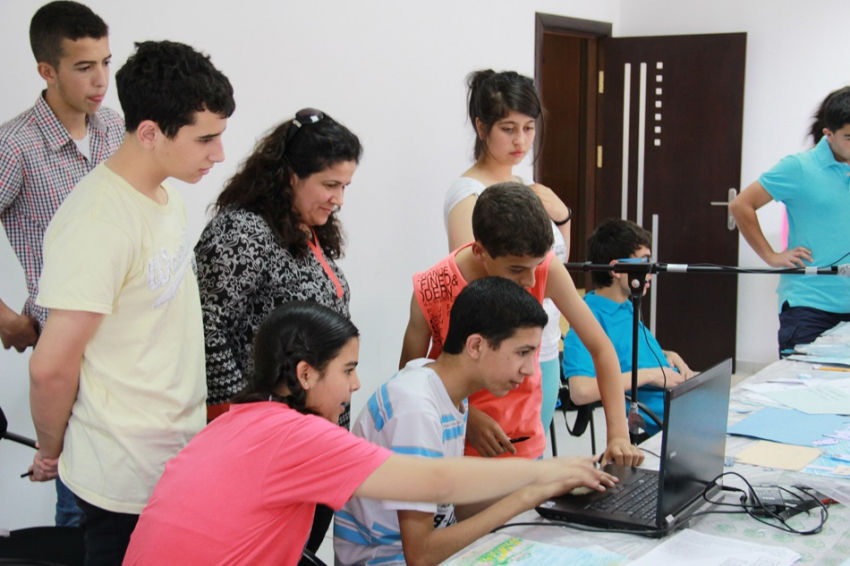
On 10 June, the Walid and Helen Kattan Science Education Project organised a videoconference between Palestine, Brazil and India, during which Palestinian students from the Collège des Frères School in Bethlehem shared Scientoons (science cartoons) they created based on knowledge gained through research carried out on water as both a local concern and as a global socio-scientific environmental issue.
The videoconference was held in participation with Pradeep Srivastava, a scientist and associate director at the Central Drug Research Institute in India and originator of Scientoons as a means of science communication. Also participating were Maria Nogueira, a neuroscientist, associate professor at the Sao Paulo Universtity, member of the Institute of Biomedical Sciences and researcher in science communication from Brazil; Samar Darwish Kirresh, senior researcher at the Walid and Helen Kattan Science Education Project; the students; and their supervising teacher, Ekhlas Bannoura, from Palestine.
This is considered to be the first initiative of its kind in communicating science between students, teachers and researchers at a multi-national level. It is also an initiative that blended science and visual arts in transferring scientific knowledge.
Scientoons are cartoons based on science. As well as being entertaining, they also provide information about new research, subjects, data and concepts in a simple, interesting and thought-provoking way. They enable the transfer of scientific knowledge directly relevant to community life, embedded in culture-specific humour, to shed light on and raise interest in important issues.
The conference was notable for the active participation of the Palestinian children working on the Scientoons, and also for their breakthrough in translating them into short animated movies. Srivastava marked 10 June 2013 as the date of the world's first animated scientoons, crediting the Palestinian children who created them.
The Animation Programme, led by researcher and multimedia expert Kiffah Fani, is a longstanding programme run by the Foundation's Qattan Centre for Educational Research and Development, where the team helped the students develop preliminary skills through a workshop.
Nogueira stated that the initiative was to be highly praised both for efforts and outcomes, and affirmed her wish to continue such initiatives and to spread them to others all over the world.
For Kirresh, the process of developing the Scientoons was viewed as both a teaching and a learning experience. It was researched in terms of those two perspectives as well as in terms of the original aim of Scientoons as a way to communicate science. The experience had a positive educational value for both students and teachers, and this can be further researched and harnessed for learning and communicating science. There are no limits for methods of learning as long as systems are open to research, knowledge and development.
One of the Palestinian students, Kameel, described his experience as fun, stating that it encourages the student to go beyond traditional ways of learning. Another student, Sarah, explained that her research abilities had become much more developed, and that her sense of responsibility towards research has changed. Nizar said that he felt that in order to create the final product the team had to think deeply about scientific details in every step of the work which generated motivation to undertake further research. Zara said that the project led towards integrating other curricular subjects like geography, which added to their knowledge in such other subjects.
The Walid and Helen Kattan Science Education Project is part of the Qattan Centre for Educational Research and Development. It aims to improve the quality of science education in Palestine’s schools. The Science Education Project equips teachers with the latest tools and methods for encouraging an interactive classroom environment, where student participation and input is considered a valuable part of the learning process. The project also helps to promote a culture of science literacy outside of the classroom, by encouraging the use of science in day-to-day problem-solving and in understanding the natural world.
